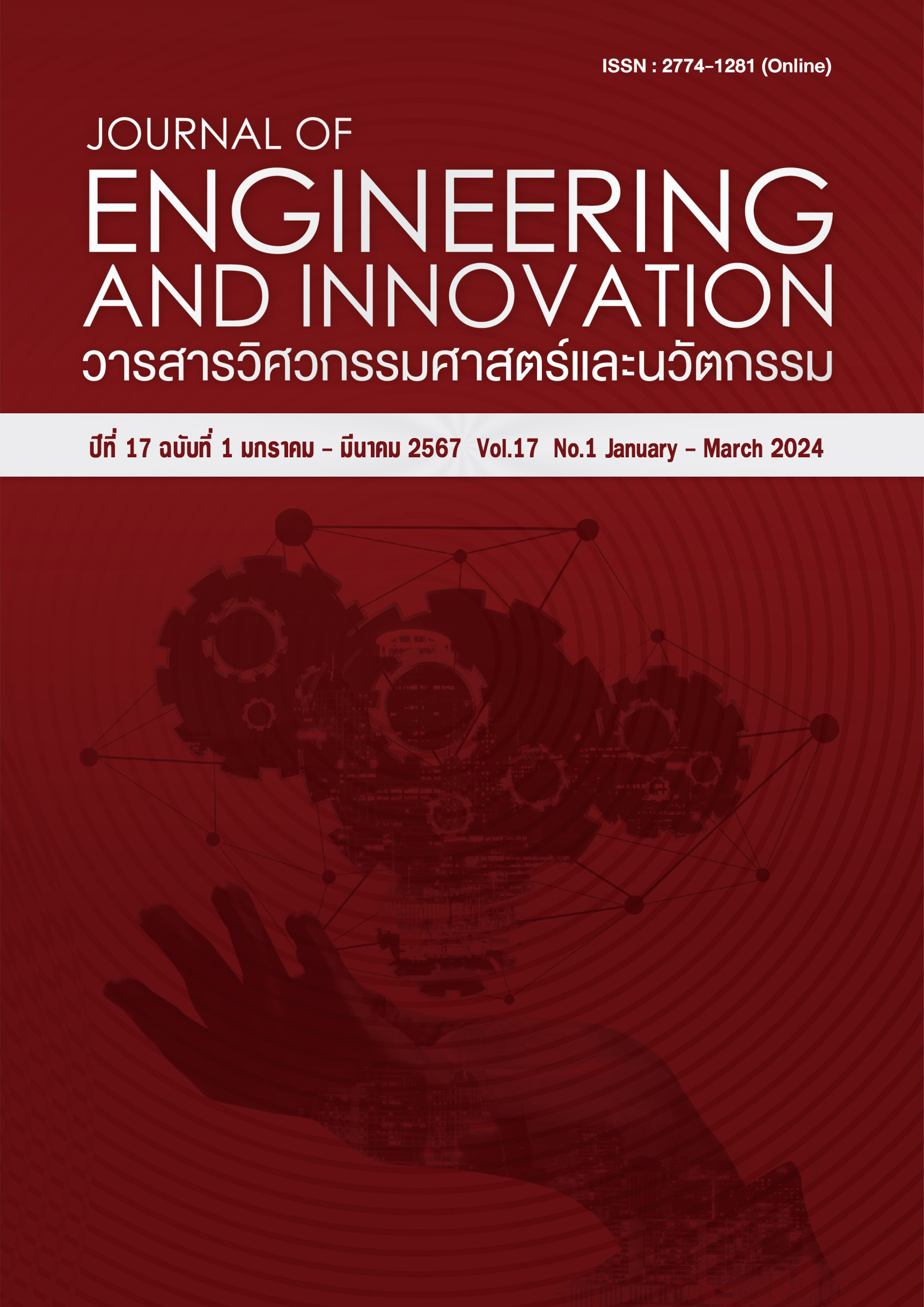Application of Macroscopic Mathematical Models to Predict and Evaluate the Road Deaths Rates in Thailand
Main Article Content
Abstract
In this research, two macroscopic-mathematical models namely, the Smeed model and the Koren & Borsos model, are applied to predict road deaths per 100,000 population (D/P) and to evaluate the general performances of the implementation of various road safety measures in Thailand compared to the national road safety targets. While the Smeed model is adopted to illustrate that the D/N values will decrease, as the vehicle occupancy rates increase, the Koren & Borsos model is also used to model the relationship between the D/P values and the vehicle occupancy rates as an inverted U-shaped curve. It was found that at the national level of Thailand, the D/P values tended to decrease as the vehicle ownership rates increased. For the Koren & Borsos model, this findings indicated that at the current situation, Thailand has already passed the turning point (the maximum D/P value). Importantly, Thailand sill cannot achieve the national road safety targets. At the provincial level of Thailand, the relationship between the D/P values and the vehicle occupancy rates is as an inverted U-shaped curve. However, the reliability of such relationship is relatively low. The trend of the D/P changes of each province is uniquely distinct over time (years). These circumstances can cause problems and obstacles in setting the road safety targets of each province to be consistent with and lead to achieve the national road safety targets of Thailand in the future.
Article Details
References
World Health Organization. Global Status Report on Road Safety 2018. Geneva, Switzerland; 2018.
United Nations. The Sustainable Development Goals Report. New York, USA; 2016.
Office of the Prime Minister. Announcement of the Office of the Prime Minister on the Announcement of the Master Plan under the National Strategy (2018 – 2037). Royal Thai Government Gazette; vol.136, 2019.
Smeed RJ. Some Statistical Aspects of Road Safety Research. Journal of Royal Statistical Society, Series A (General). 1949;112(1): 1-34.
Andreassen D. Population and registered vehicle data vs. road deaths. Accident Analysis & Prevention. 1991;23(5): 343-351.
Koren C, Borsos A. Is Smeed’s law still valid? A world-wide analysis of the trends in fatality rates. Journal of Society for Transportation and Traffic Studies. 2010;1: 64-76.
Borsos A, Koren C, Long-term safety trends as a function of vehicle ownership in 26 countries. Transportation Research Record: Journal of the Transportation Research Board. 2012;(2280): 154-161.
Pitsiava-Latinopoulou M, Tsohos G. The application of Smeed’s equation for road accidents in Greece. Accident Analysis & Prevention. 1982;14: 1-6.
Valli PP, Road accident models for large metropolitan cities of India. IATSS Research. 2005;29(1): 57-65.
Ponnaluri RV. Modeling road traffic fatalities in India: Smeed's law, time invariance and regional specificity. IATSS Research. 2012;36(1): 75-82.
Klungboonkrong P, Faiboun N, Wooley J, Modelling road accident fatalities in Thailand and other Asian countries. International Journal of GEOMATE. 2018;15: 91-98.
Klungboonkrong P, Wooley J, Pramualsakdikul S, Tirapat S, Yotmeeboon W, Pattulee N, et al. Road safety status and analysis in Thailand and other Asian countries. Engineering and Applied Science Research, 2018;46(4): 340-348.
Austroads. Towards Safe System Infrastructure: A Compendium of Current Knowledge. Sydney, Australia; 2018.
World Health Organization. Global Plan for the Decade of Action for Road Safety 2021-2030. Geneva, Switzerland; 2021
Department of Disaster Prevention and Mitigation. Thailand Road Safety Master Plan 2018-2021. Ministry of Interior, Thailand; 2019.
Department of Disaster Prevention and Mitigation. Strategic Map Decade of Action for Road Safety 2011 – 2020. Road Safety Directing Center; 2011.
Injury Data Collaboration Center, Department of Disease Control, Ministry of Public Health. Road Traffic Death Data Integration System. Available from: https://dip.ddc.moph.go.th/new/บริการ/3base_status_new [Accessed 1st June 2021].
Koren C, Borsos A. From increasing to decreasing fatality figures: where is a turning point?. Proceedings of the Eastern Asia Society for Transportation Studies, 2013;9: 1-10.
Department of Disease Control, Ministry of Public Health. 2020. Coronavirus Disease 2019 Situation Report. 2020.
The Bureau of Registration Administration, Department of Provincial Administration, Ministry of Interior. Office statistics registration systems. Available from: https://stat.bora.dopa.go.th/new_stat/webPage/statByYear.php [Accessed 1st June 2021].
Transport Statistics Subdivision, Planning Division, Department of Land Transport. Vehicle Registration Data. Available from: https://web.dlt.go.th/statistics/ [Accessed 1st June 2021].
Office of the National Economics and Social Development Council. Socioeconomic Data. Available from: https://www.nesdc.go.th/main.php?filename=social [Accessed 1st June 2021].
Kristianssen AC, Andersson R, Belin MA, Nilsen P, Swedish Vision Zero policies for safety – A comparative policy content analysis. Safety Science, 2018;103: 260-269.
Taneerananon P, Klungboonkrong P. THAILAND ROAD SAFETY CRISIS: Time for Urgent Actions. In Proceedings of The 20th National Convention on Civil Engineering, 8-11 July 2015, Pattaya Chonburi. 2015.
Klungboonkrong P, Faiboun N, Luathep P. Road safety analysis in Thailand and other Asian countries: urgent actions for Thailand. International Journal of GEOMATE. 2018;15: 91-98.
Jinvong T. Road Accidents, the “Silent Threat” That is Challenging to Deal with. Journal of Emergency Medical Services of Thailand, 2021;1: 71-76.

